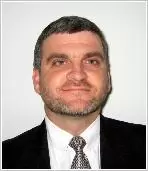Obamacare Critics Ignore Bush's Medicare Outreach to Churches
On Monday, Republican opposition to Obamacare went from the ridiculous to the sublimely ridiculous. After the right-wing Weekly Standard protested the Department of Health and Human Services' outreach activities to churches, Fox News host Steve Doocy complained that the HHS enrollment flyers, bulletins and enrollment events constituted a "violation of the separation of church and state." But those protests aren't just comical on their face. As it turns out, the Bush administration used exactly the same tactic to encourage seniors to sign up for the Medicare Part D prescription drug program. And one of the reasons we know this because President Bush and his Secretary of Health and Human Services Mike Leavitt told us so.

As I've documented elsewhere ("What's the Difference between a Medicare Navigator and an Obamacare Navigator?"), the Affordable Care Act uses virtually same program of "navigators"--that is, partnerships with hospitals, universities, churches and non-profits groups to help American enroll in a health insurance plan--Medicare Part D depended on beginning in 2004. (As it turns out, Medicare has been pouring millions of dollars into State Health Insurance Partners--or SHIPS--since 1990.) In a July 2013 Washington Post op-ed ("To Implement Obamacare the Right Way, Look to Bush's Medicare Reform"), former HHS Secretary Leavitt explained why that was a good idea:
Before the program was implemented, only 21 percent of seniors had a favorable opinion of it, and 66 percent didn't understand what the reform would mean for them. So we spent 18 months devising and implementing a campaign to explain the prescription drug benefit, prepare seniors as well as partners -- such as community groups, churches, pharmacies, insurance plans and state and local governments -- and then sign people up. A national bus tour supported each phase. The summer before enrollment (the same period that the ACA is in now) we logged more than 600,000 miles and visited 48 states. As secretary, I made 119 stops in 98 cities. I learned that with a program like the ACA, you can't count on Washington to sell it. You have to reach people where they live, work, pray and play. [Emphasis mine.]
Secretary Leavitt practiced what he preached. As he explained during a joint appearance with President Bush on May 9, 2006:
"Last Sunday was 'Sign Up Sunday,' we went to churches all over America saying this is a great way to love your neighbor, or to honor your father and your mother. Help them sign up for the prescription drug plan."
On February 22, 2006, Leavitt held an event and press conference at the First Baptist Church in Pensacola, Florida to "highlight community-based resources that will help educate and enroll seniors and disabled beneficiaries in the new Medicare Prescription Drug Coverage." There, the Pensacola News Journal reported, "Leavitt met with about 200 seniors at the First Baptist Church of Pensacola on Wednesday, arriving from Mobile aboard a big, blue bus called the Medicare Mobile Education Center" and delivered this simple message:
"We wouldn't have 250,000 to 400,000 people a week enrolling if it wasn't a good deal for seniors."
Mark McClellan, then head of the Centers for Medicare and Medicaid Services (CMS), and his team repeatedly testified to Congress about the success of the outreach to houses of worship and faith-based institutions. For example, on May 3, 2006, Medicare Today regional coordinator Susan Everett told the House Ways and Means Committee:
In Bridgeport, Connecticut, to name one instance, the parish nurses of Ascension St. Vincent Health Services worked with the State to have computer‑equipped vans at churches to educate and enroll parishioners. This type of effort has been very successful and well received.
On June 14, 2006, McClellan told the committee:
We believe that one-on-one counseling is important for people with Medicare to make confident decisions about their Medicare prescription drug coverage. To develop this grassroots network, CMS reached out to organizations that have contact with people with Medicare on a daily basis. To reach beneficiaries "where they work, live, play, and pray," we sought to involve individuals and institutions such as employers, churches and synagogues, financial advisors and community centers. By expanding beyond our traditional partners such as beneficiary and caregiver groups and CMS' regional office structure, we ensured that people with Medicare could receive necessary education and enrollment assistance at the community level.
What McClellan described was an outreach program President Bush's Medicare Part D drug plan used from the very beginning and the Affordable Care Act uses now. As President Bush boasted in May 2006, "Churches all across the country are reaching out -- synagogues, people from different faiths understand that it makes sense to help their parishioners realize the benefits." The only difference today? Now, a Democrat sits in the Oval Office.

